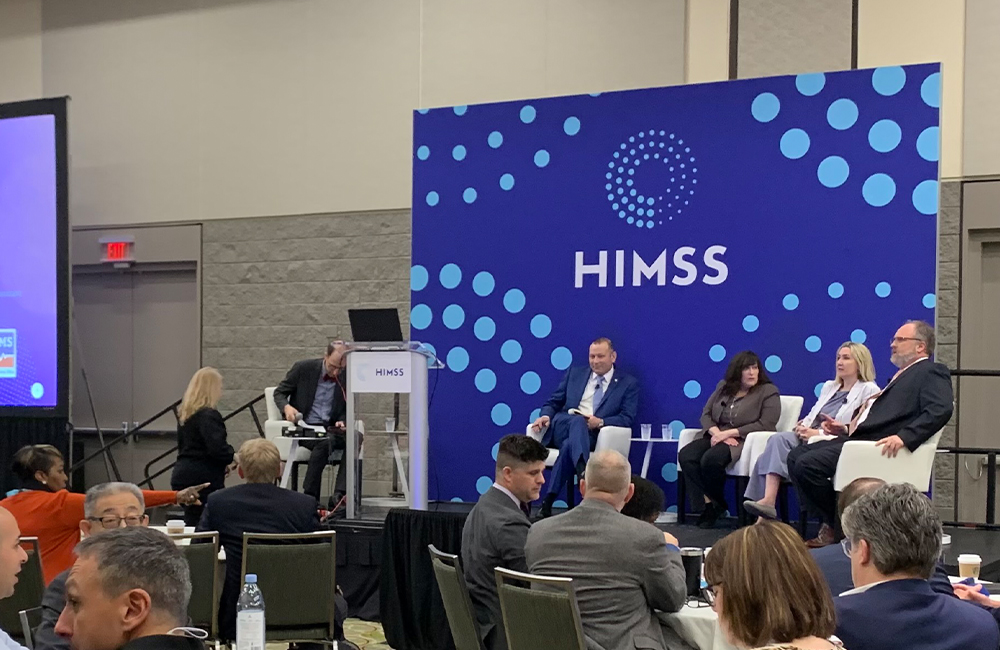FEHRM Says EHR Deployment is Half Complete

The departments of Defense and Veterans Affairs, as well as the Federal Electronic Health Record Modernization (FEHRM) office, see next steps in federal EHR implementation as driving a continuous improvement and a delivery model that bolsters standardization and responsiveness.
“[DHMS] has reached the beginning of the end, at least CONUS,” said FEHRM Director Bill Tinston during a HIMSS session in Orlando, Florida, Wednesdau. “Last week, they did the commanders workshops in Dayton, [Ohio]. That is the last wave CONUS. They have begun the final site.”
Holly Joers, the program executive officer for DHMS, explained that the office is about 50% complete with deployment implementation at the sites. As DHMS looks toward the next 18 months of completing MHS baseline transformation, Joers is focusing on continuous improvement. From an IT perspective, her agency is looking at “the power of the enterprise” to quickly iterate and respond to new challenges, but IT must be implemented to support business transformation.
“Instead of driving a continuous note, it’s really about coordinated care and driving those enterprise standards for coordinated care,” Joers said. “One of the things we’ve learned is that, while you can train someone on how to use a system, this really is a change management process. It’s not about the IT, it’s about that business transformation.”
Looking ahead, Joers is focusing on “workforce transformation,” as the next step in integration, which relies heavily on change management. To do this, federal EHR leaders are looking to standardize workforce training, using the same processes, to reduce time spent retraining if health care providers change sites.
“It’s not ‘launch and leave.’ It’s ‘how do we change our collective mindsets for continuous improvement?’ We know there are pain points. It’s not perfect, but it’s safer, it’s more efficient in a lot of areas, and those areas where it’s not, we’re honing in on them to drive that continuous improvement,” Joers said.
At the beginning of its EHR modernization journey, the VA is leveraging lessons learned from DOD. Newly appointed executive director of VA’s EHR Integration Office, Terry Adirim, said that she’s viewing VA’s next few rollouts as a “restart,” focusing on clinical and business transformation as it launches the Cerner system at future sites.
“We need to help our end users as well as our veterans understand that this is going to be a new way of delivering care at VA,” Adirim said. “This is an opportunity for VA to have an enterprise-wide approach so that our veterans experience a consistent way of getting care across the system.”
Adirim is looking to improve communication throughout all levels of VA to explain the benefits and improvements that come from change, which is a factor that was “missing at the start” of the agency’s initial rollout.
As DHMS looks to enhance its EHR deployments and VA focuses on initial launch, both agencies are emphasizing the importance of workflow optimization and data use. Team Genesis developed a “capability needs process” to drive a continuous delivery model.
“It’s understanding from the community what they need and the roadmap of when they’re going to get it, then how do you federalize it,” Joers said.
Moving forward, VA and DHMS are looking to evolve care long-term by developing communities of practice. Adirim said that she will work to identify mechanisms to “merge communities” as it evolves to disseminate best practices and evidence-based care faster.
“We were able to go live, but that’s not the end of it,” Joers said. “This really opens the door for those communities to talk and figure out, on that single common record, what’s the best way to do this? How do we take advantage of national standards?”
This is a carousel with manually rotating slides. Use Next and Previous buttons to navigate or jump to a slide with the slide dots
-

IRS CX Efforts Come With a New Acquisition Office
The agency is using Inflation Reduction Act funds to transform the taxpayer experience through digital tools and technology.
3m read -

CDRH Director Jeff Shuren to Leave FDA
Michelle Tarver, deputy center director for transformation, will become acting director of the Center for Devices and Radiological Health.
1m read -

How Health Care Leaders Should Plan for Building Cyber Resiliency
Policy leaders recommend health care organizations implement tools like encryption and multi-factor authentication to protect their data.
4m read -

HHS Aligns AI, Tech Strategy Under its Policy Agency
ONC will have a new name and oversee more c-suites to better shape the future of health care technology policy.
3m read




